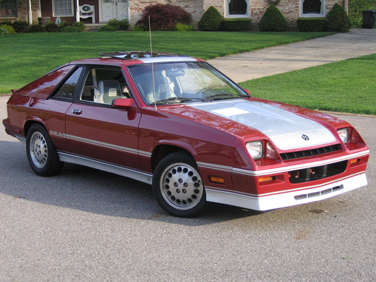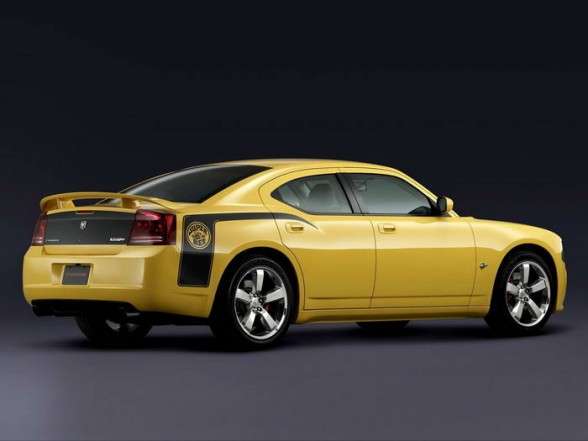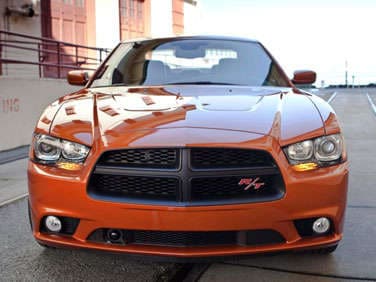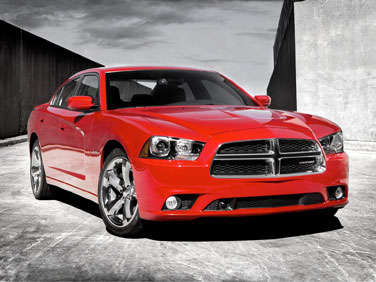Recent Articles
Popular Makes
Body Types
Dodge Charger Used Car Buyer's Guide

After a hiatus of some 19 years, Dodge reintroduced the Charger in 2006, to considerable acclaim. Taking the car back to its rear-drive roots with powerful V8 options, the rejuvenated Charger was more like the original 1960’s Charger, than the front-drive Dodge Omni-based “Charger” of the late 1980’s.
Back in 1966, the pony car wars were in full swing and Dodge’s flag bearer in its campaigns was the Charger. Based on Dodge’s mainstream Coronet sedan, the Charger benefited from a significant halo effect generated by its association with a massive 7.0-liter (426 cubic-inch) HEMI V8 churning out some 425 horsepower. Of course, just as today, there were more civil engines available for the car as well, starting with a 5.2-liter (318 cubic-inch) V8 which made only 230 horsepower.
As time went on and the fuel crises of the 1970’s, along with sharp increases in insurance rates set in, just as with all the 60’s muscle cars, the Charger found itself facing numbered days and was discontinued—until…
…1982, when the nameplate was resurrected for a Chrysler K-Car based “sporty” coupe — the most potent of which was the 1987 Shelby Charger GLH-S. As the name implies, legendary racer and auto tuner Carroll Shelby set a team of his good-ole-boys loose on the front drive econo-arrow’s 2.2-liter turbocharged inline four. With considerable reworking of the intake, the group managed to coax 175 horsepower from the car’s engine.
And that was it for the Charger—until…
Dodge Charger: Used Car Buyer's Guide
…Dodge, inheriting a platform from then-parent organization Daimler-Benz, based its re-worked 2006 Dodge Charger on the underpinnings of the W210 Mercedes-Benz E-Class model, which ran from 1996 to 2002. And while the platform was old for a Mercedes, it worked wonders for the ride and handling of the Dodge. The Mercedes platform, in concert with Chrysler’s renewed 5.7-liter HEMI V8, brought respectable performance back to the nameplate at last.
Universally praised for its performance, reliability, good looks, and family friendliness, the contemporary Dodge Charger has gone through two generations since the car was returned to the Dodge lineup.
Dodge Charger: 2006 – 2010
Another car benefiting from the W210 platform was the Chrysler 300. In fact, the Chrysler was introduced before the Dodge. And while most people were thoroughly enamored with the Chrysler, the Dodge found an audience of mixed-responders. Some people were disappointed the car resurfaced as a four-door sedan, rather than the two-door coupe Chargers had always been.
Nobody was disappointed with its performance though.
The 5.7-liter HEMI V8 installed in the R/T version of the 2006 Charger made 340 horsepower. Dodge even managed to wring another 10 horsepower out of the engine for a Daytona R/T package. To go with the more potent engine, that version of the Charger also featured load-leveling shocks, thicker anti-roll bars, retuned steering, upgraded brake pads, performance tires, unique alloy wheels and as you might well have guessed by now, even better acceleration, handling and braking.
The standard Charger (SE) for 2006 was no slouch either, equipped as it was with a 250-horsepower 3.5-liter V6. That trim level sent you out of the showroom with 17-inch wheels, air-conditioning, a CD player, a tilt-telescoping steering wheel, full power accessories and cruise control. The next trim level up from SE was SXT; adding to the aforementioned good stuff, features like a power driver seat, a 276-watt Boston Acoustics sound system, a leather-wrapped steering wheel, and fog lamps were among the highlights of the kit that made the SXT fit.
And then, of course there was the world beating Dodge Charger SRT8. The top of the performance heap for Dodge sedans, the Charger SRT8 flamed a 6.1-liter version of the HEMI, good for — wait for it — 425 horsepower.
Sound familiar?
Five-speed automatic transmissions did the shifting, regardless of the engine configuration you chose. Another unique feature of the 5.7-liter HEMI was its displacement on demand feature. At cruising speeds on the highway under light load, the 5.7 had the ability to deactivate half its cylinder count, enabling it to go farther on less fuel.
However, all was not absolutely divine in the Charger’s world.
While the exterior styling was quite distinctive, and the cars went like skunk stink borne on a high wind, their interiors, were, well, plain. Characterized by vast expanses of black plastic, it was pretty clear where the majority of the attention to detail was expended on the Charger’s behalf.
For the 2007 model year, Dodge offered a 190-horsepower, 2.7-liter V6, mated to a four-speed automatic, to take some of the cost out of the car and enable more people to afford the look, if not the performance of the R/T and SRT8 (this engine was found primarily in rental versions of the Charger). Additionally, an all-wheel drive solution was introduced for the Dodge sedan and paired with Charger SXT and R/T.
For 2008, the interior got a bit of attention — but frankly it was so far gone, that bit wasn’t much of a hit. The interior of the car wouldn’t become interesting until the full redesign for the 2011 model year, but we’re getting ahead of ourselves. The 2008 update, brought somewhat nicer materials and a redesigned center console to the Charger. A hard-disc based music storage system was also specified for the 2008 car, along with Sirius Backseat TV. For 2009, the 5.7’s output was bumped to 368 horsepower and 2010 saw the introduction of side curtain airbags as standard equipment.

Dodge Charger: Current Model
An all-new Charger was introduced for the 2011 model year. While it is still based on the W210 platform, the look of the car reflects more of the Charger’s heritage than the previous car. Additionally, the interior was reworked to excellent effect. Offered in three iterations, SE, R/T and (later as a 2012 model) SRT8, the new Charger is a vast improvement over the already quite good car it replaces, in every respect.

Dodge Charger: Summary
After 19 years, Dodge brought the Charger back in a very big way. The car’s size made it work as a traditional American family car, but its performance potential was sufficient to ignite a burning desire under driving enthusiasts too. And while the 2.7-liter V6 left many scratching their heads in wonder at its existence, the fact remains every other iteration of the Charger derived from that 2006 car is worthy of consideration on the secondary market.
Very few recalls were issued for this car, but it pays to run a search just the same to make sure the car you’re interested in was either not involved in a recall, or repaired if it was. Similarly, as these were performance cars, you’ll definitely want to make sure your mechanic goes over the car for any signs of high-speed hi-jinx, AKA abuse.
